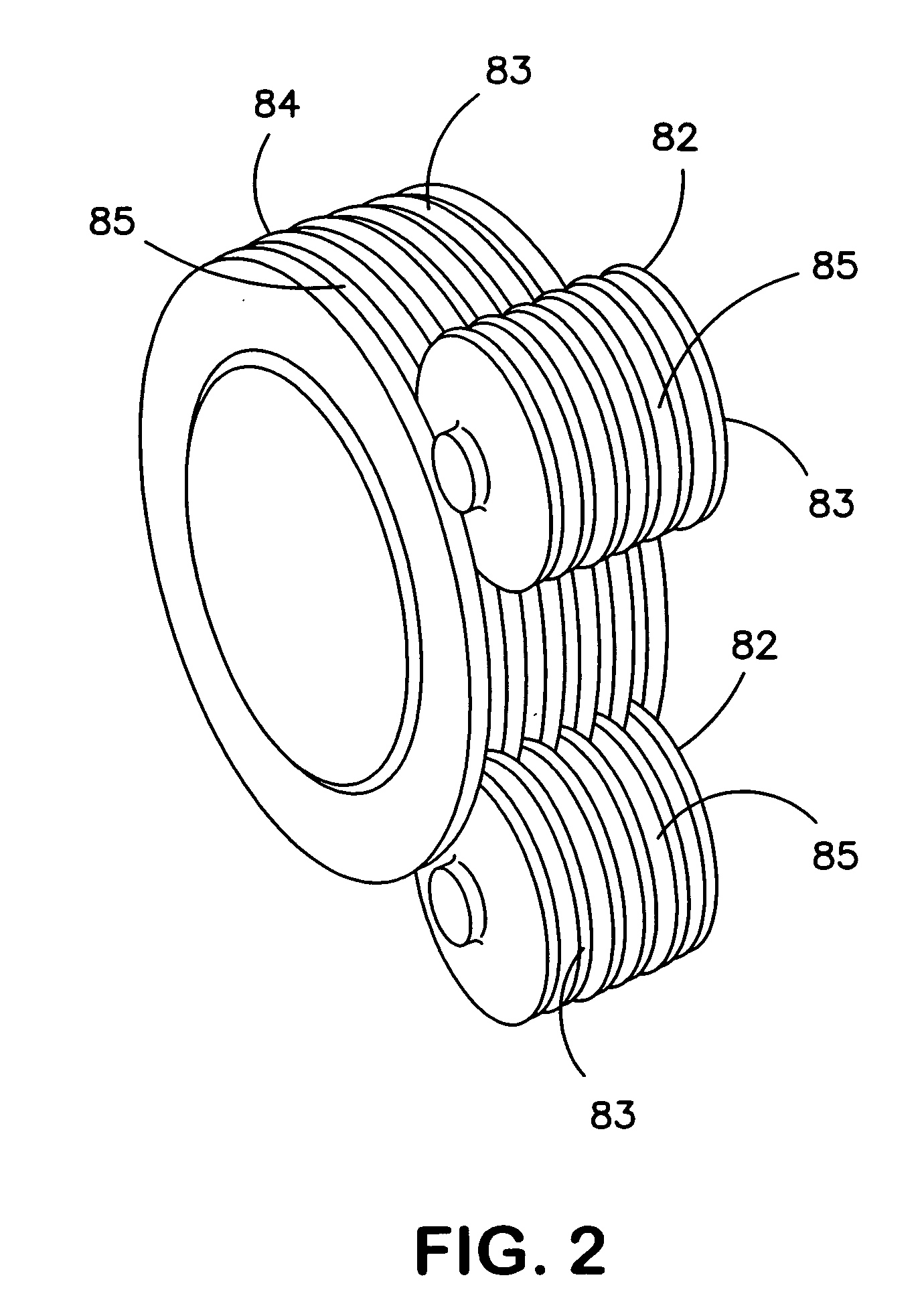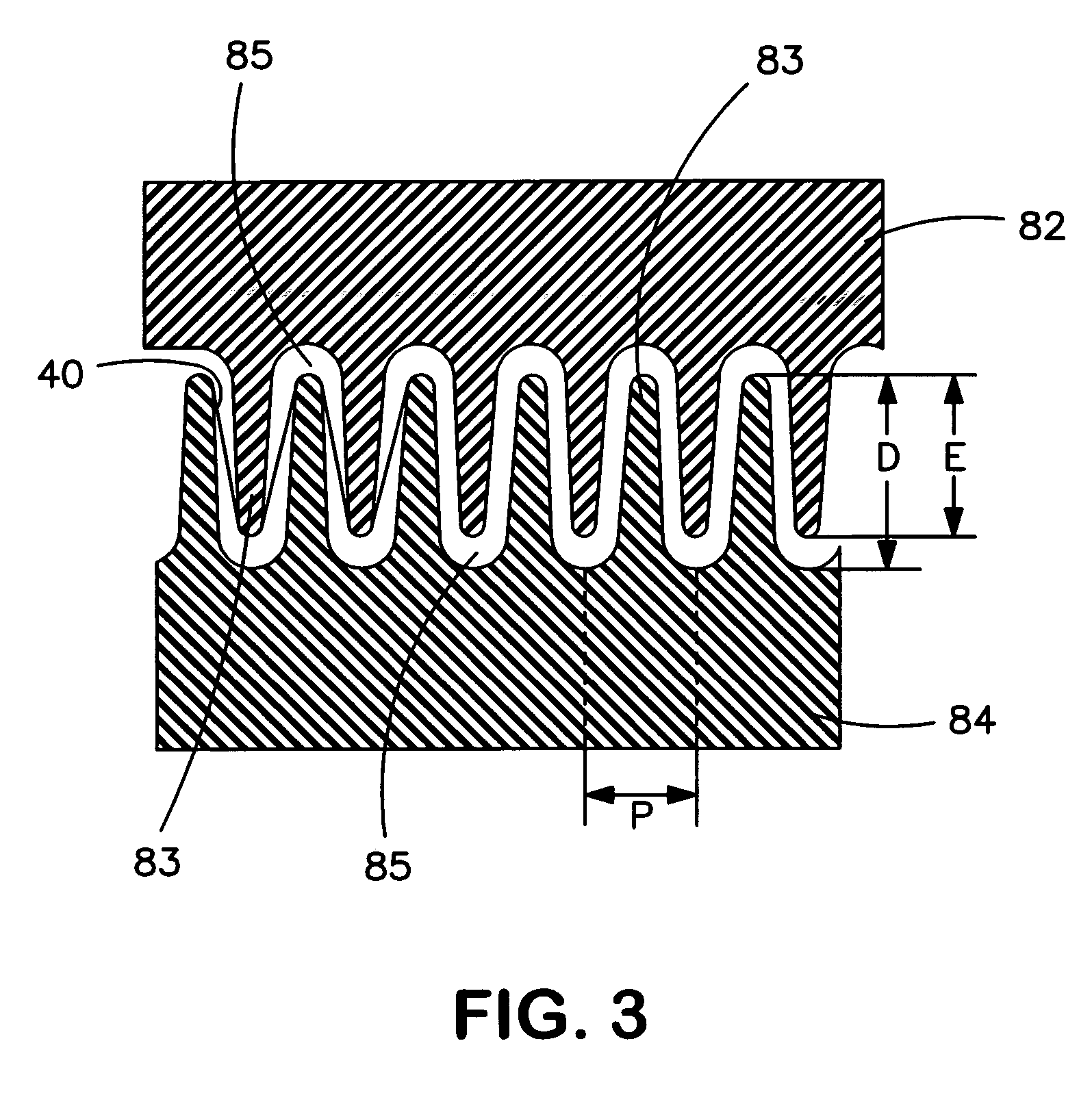Method for forming an elastic laminate
a technology of elastic laminates and elastomers, which is applied in the field of forming elastic laminates, can solve the problems of poor extensibility of non-elastic polymers, unsatisfactory and uncomfortable against the wearer's skin, and the general consideration of non-elastic webs formed from non-elastomeric polymers, such as polyolefins, to achieve the effect of reducing the number of elastomers and reducing the number o
- Summary
- Abstract
- Description
- Claims
- Application Information
AI Technical Summary
Benefits of technology
Problems solved by technology
Method used
Image
Examples
example 1
[0058] The ability to form an elastic laminate from an elastic film and a fibrous nonwoven web in accordance with the present invention was demonstrated. The fibrous nonwoven web was a polypropylene spunbond web having a basis weight of 20 grams per square meter and produced by BBA Fiberweb of Simpsonville, S.C. under the trade designation Sofspan® 120. The percent stretch of the spunbond web in the cross-machine direction was 25% when subjected to a force of 1,000 grams per 3 inches. The elastic film was a multi-layered film having an “skin-core-skin” structure. The core comprised 96 wt. % of the film and the skin layers comprised 4 wt. % of the film. The core was formed from 95 wt. % of a polyolefin elastomer and 5 wt. % of an antiblocking agent. The polyolefin elastomer was a linear low density polyethylene (LLDPE) obtained from Dow Chemical under the name AFFINITY® EG 8200G (density of 0.870 grams per cubic centimeter and a melt flow rate of 5.0 g / 10 min). The antiblocking agent...
example 2
[0062] The ability to form an elastic laminate from an elastic film and a fibrous nonwoven web in accordance with the present invention was demonstrated. Specifically, the process of Example 1 was utilized to form the laminate, except that a groove roll engagement of 0.38 centimeters was utilized.
example 3
[0063] The ability to form an elastic laminate from an elastic film and a fibrous nonwoven web in accordance with the present invention was demonstrated. Specifically, the process of Example 1 was utilized to form the laminate, except that a groove roll engagement of 0.43 centimeters was utilized.
PUM
| Property | Measurement | Unit |
|---|---|---|
| Length | aaaaa | aaaaa |
| Fraction | aaaaa | aaaaa |
| Elastomeric | aaaaa | aaaaa |
Abstract
Description
Claims
Application Information
 Login to View More
Login to View More - R&D
- Intellectual Property
- Life Sciences
- Materials
- Tech Scout
- Unparalleled Data Quality
- Higher Quality Content
- 60% Fewer Hallucinations
Browse by: Latest US Patents, China's latest patents, Technical Efficacy Thesaurus, Application Domain, Technology Topic, Popular Technical Reports.
© 2025 PatSnap. All rights reserved.Legal|Privacy policy|Modern Slavery Act Transparency Statement|Sitemap|About US| Contact US: help@patsnap.com



